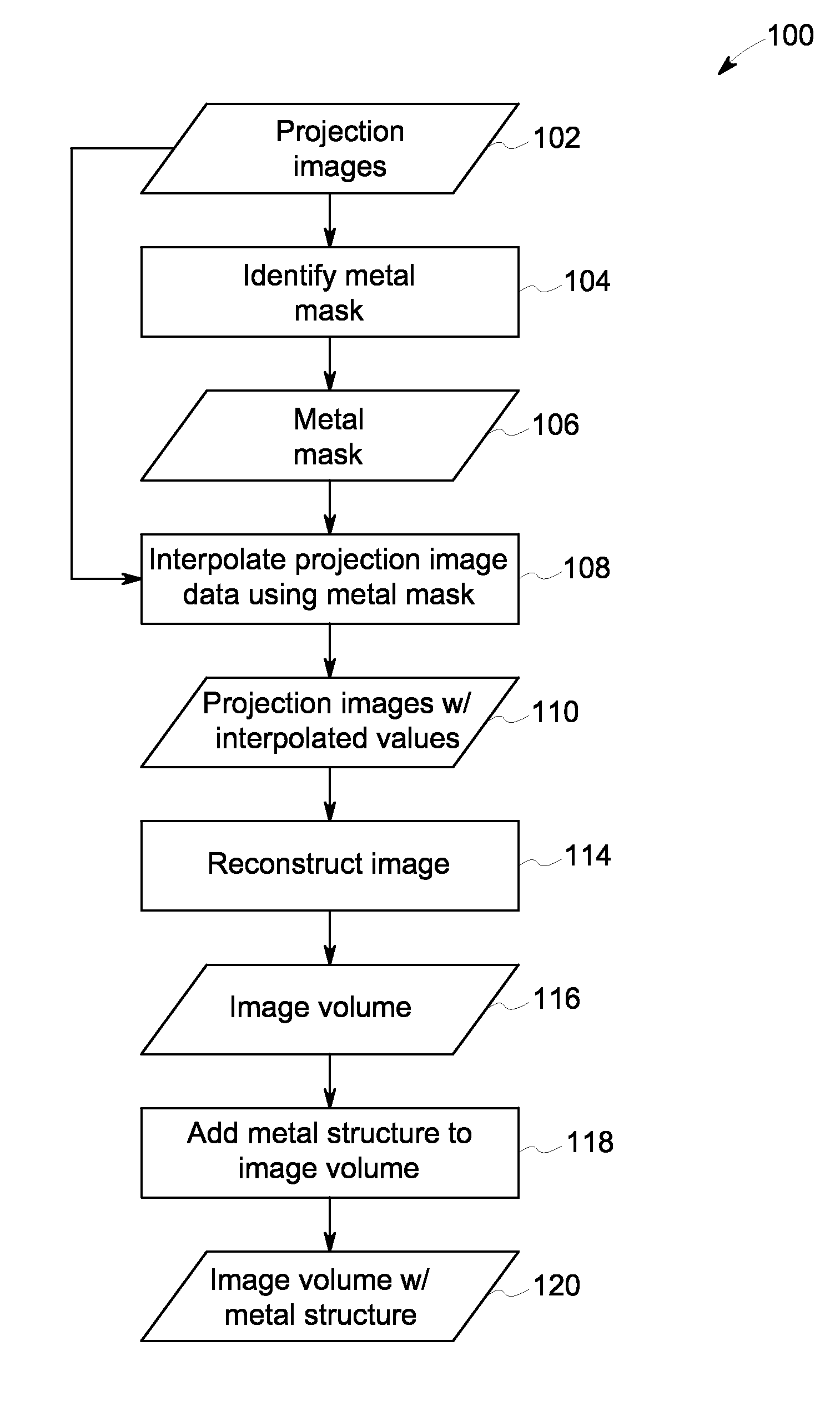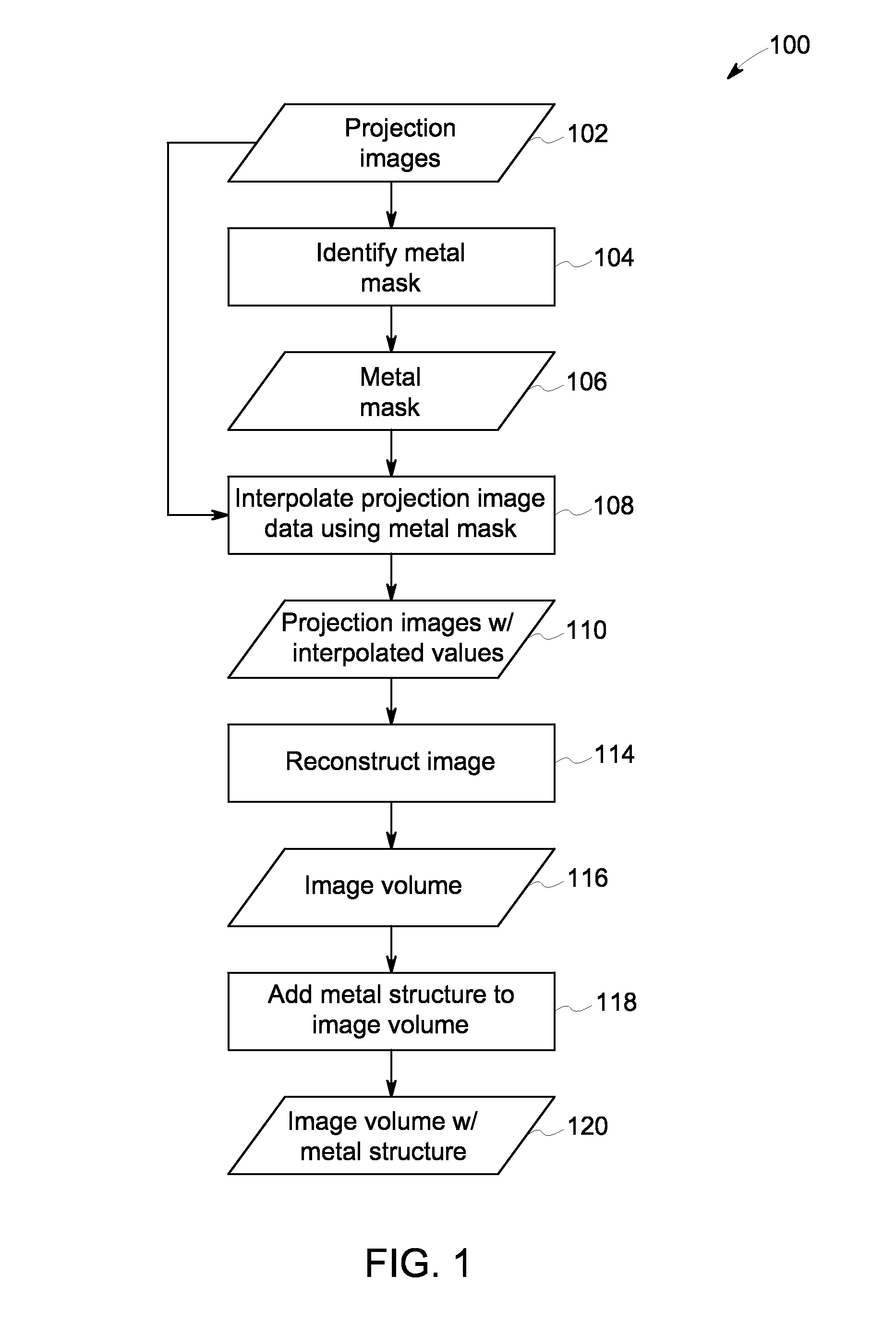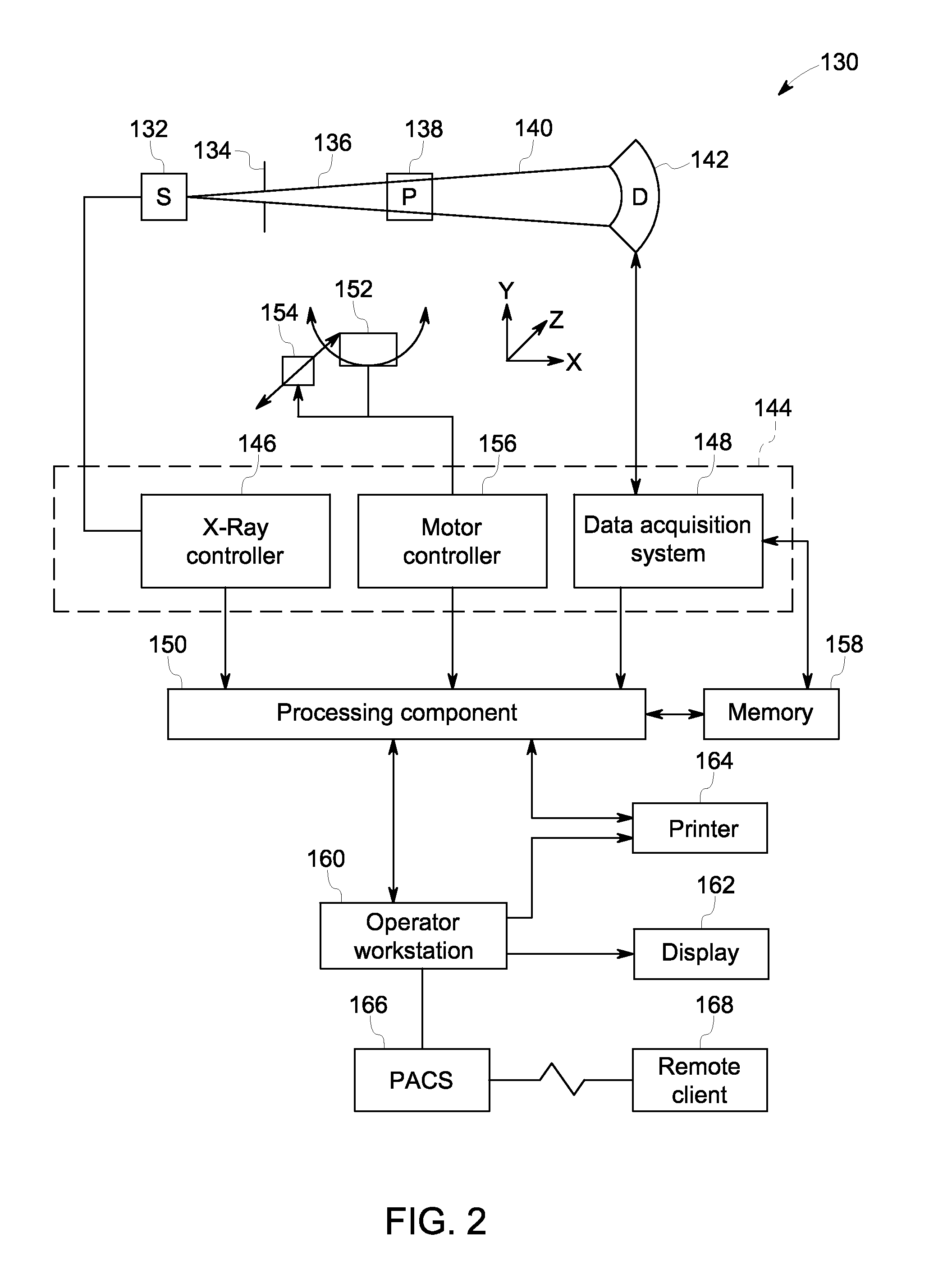Robust artifact reduction in image reconstruction
a technology of image reconstruction and artifact reduction, applied in the field of image reconstruction, can solve problems such as data irregularities, limiting the ability of the system to address such data imperfections, and x-ray images may suffer from artifacts
- Summary
- Abstract
- Description
- Claims
- Application Information
AI Technical Summary
Benefits of technology
Problems solved by technology
Method used
Image
Examples
Embodiment Construction
[0016]The present disclosure relates to approaches that may be employed to reduce image artifacts, such as approaches for metal artifact reduction (MAR), in the reconstruction of volumetric images from X-ray projection images.
[0017]As discussed herein, the present approaches may be applicable in circumstances where acquired projection data is impacted by high-density regions or objects, such as metal objects, that affect transmission of X-rays through the imaged volume. Such circumstances may arise in various X-ray imaging contexts, such as C-arm acquisition, mobile C-arm, and computed tomography (CT) contexts. The present approaches may help address issues where X-ray penetration and transmission is impacted by the presence of metal objects within the imaged volume. Metal structures within the imaged volume often lead to streak artifacts in the reconstructed volumetric images, due to beam-hardening, partial volume effects, noise, etc. These streaks can negatively impact even region...
PUM
 Login to View More
Login to View More Abstract
Description
Claims
Application Information
 Login to View More
Login to View More - R&D
- Intellectual Property
- Life Sciences
- Materials
- Tech Scout
- Unparalleled Data Quality
- Higher Quality Content
- 60% Fewer Hallucinations
Browse by: Latest US Patents, China's latest patents, Technical Efficacy Thesaurus, Application Domain, Technology Topic, Popular Technical Reports.
© 2025 PatSnap. All rights reserved.Legal|Privacy policy|Modern Slavery Act Transparency Statement|Sitemap|About US| Contact US: help@patsnap.com



